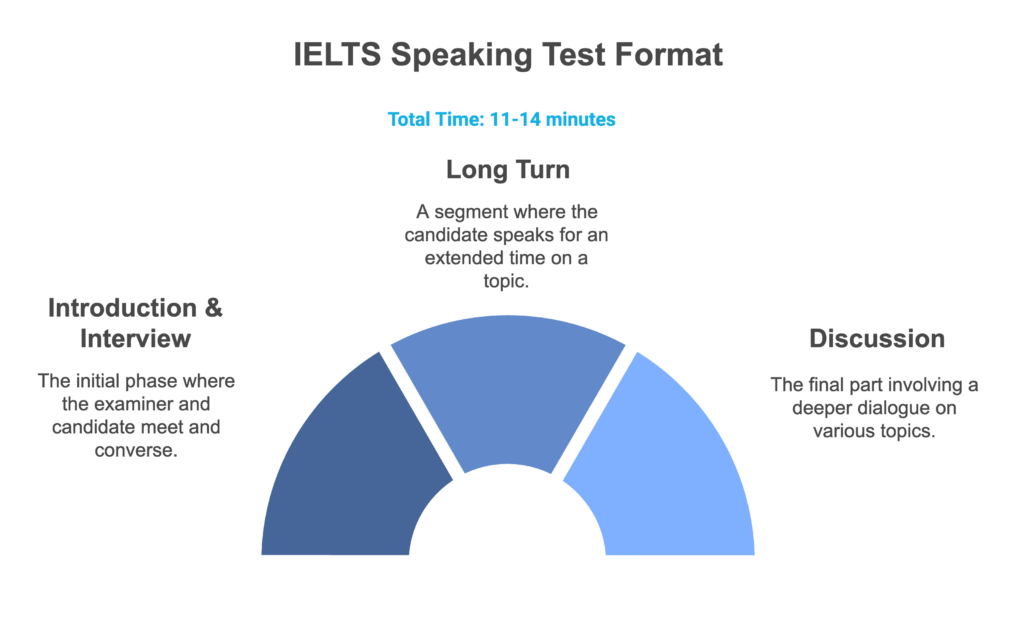Achieving a Band 9 in the IELTS Speaking test may seem challenging, but with the right strategies, preparation, and practice, it’s absolutely possible. In this complete guide, we’ll explore Parts 1, 2, and 3 of the test, discuss examiner expectations, and share proven tips used by successful students like Vijay and Sahil, who improved their scores from 6.5 to 7.5.
But first, let’s introduce Langujet, the ultimate IELTS preparation platform designed to help you master every aspect of the IELTS Speaking test. Whether you’re targeting Band 7+ or aiming for a perfect Band 9, Langujet provides personalized learning, mock exams, and in-depth feedback covering:
- Pronunciation: Improve your clarity, stress, and intonation.
- Vocabulary: Expand your word bank with less common expressions and idiomatic language.
- Grammar: Use a variety of tenses and structures accurately.
- Fluency & Coherence: Speak naturally with clear, logical responses.
Langujet’s Features Include:
- Real-Time Speaking Practice: Simulate real IELTS Speaking tests and get AI-powered corrections instantly.
- Mock Speaking Exams: Participate in full-length speaking mock exams with detailed feedback from professional examiners.
- Expert Feedback Reports: Receive detailed performance evaluations highlighting strengths, weaknesses, and actionable tips.
- Personalized Learning Path: Track your progress, set goals, and access customized practice sessions tailored to your needs.
- Pronunciation Analysis: Get specific tips on improving your accent, intonation, and stress patterns.
- Vocabulary Enrichment: Learn how to use less common words naturally and effectively.
Let’s dive into the complete guide to IELTS Speaking 2025 and learn how Langujet can transform your preparation journey.

Part 1: Introduction & Interview (4-5 Minutes)
The examiner will ask general questions about you, your home, hobbies, or daily life. Your goal is to answer confidently, extend your answers, and demonstrate fluency.
Common Question Types:
- Do you…? (Present Habit)
- Did you…? (Past Habit)
- Have you ever…? (Experience)
- Would you like to…? (Future Intent)
Top Tips for Part 1:
- Extend Your Answers (20-25 seconds): Provide examples and explanations to show fluency.
- Use Varied Grammar: Mix past, present, and future tenses.
- Use Personal Examples: Talk about real or imagined experiences.
- Link Ideas Smoothly: Use simple connectors like “However,” “On the other hand,” and “In addition.”
- Avoid Memorized Answers: Respond naturally, even if the topic seems odd.
Part 2: Long Turn (Talk for 1-2 Minutes)
You’ll receive a task card with a specific topic. The examiner will expect you to talk for 2 minutes while covering 4 bullet points provided on the card.
Common Task Card Example:
“Describe a person you know who plays a musical instrument.”
- Who this person is
- How do you know this person
- What music do they play
- Why playing an instrument is important to them
Top Tips for Part 2:
- Talk for 2 Minutes: Keep speaking until the examiner stops you.
- Use Storytelling: Include a beginning, middle, and end.
- Follow Bullet Points: Use each point as a guide.
- Use Connectors: Add phrases like “First of all,” “Moreover,” “What’s more,” and “In conclusion.”
- Stay Calm & Confident: If you run out of ideas, share a relevant memory or experience.
Example Answer:
“You’ve asked me to describe someone who plays a musical instrument, so I’ll talk about my former music teacher, Mr. Strings. He could play several instruments, including the piano, guitar, and a couple of wind instruments.”
“I first met him when I started high school. He taught music for three years before I chose different subjects. I couldn’t master the basics of the recorder, but he always encouraged us.”
“Apart from teaching, he also played with a jazz band at a local festival. Watching him perform was truly inspiring. If he hadn’t become a teacher, I believe he could have been a famous jazz musician.”
Part 3: Discussion (4-5 Minutes)
Part 3 involves more complex questions related to Part 2’s topic. You’ll need to express opinions, defend your views, and consider both sides of the argument.
Common Question Types:
- Do you agree that…?
- What impact does… have on society?
- How do you think… will change in the future?
Top Tips for Part 3:
- Answer in Depth: Give reasons, examples, and alternative perspectives.
- Use Polite Disagreement: Start with phrases like “I’m not sure I agree” or “That’s a valid point, but…”
- Consider Both Sides: Explore contrasting ideas when applicable.
- Stay Formal: Avoid using slang or overly casual language.
- Ask for Clarification: If you don’t understand the question, ask: “I’m sorry, could you clarify what you mean by…?”


